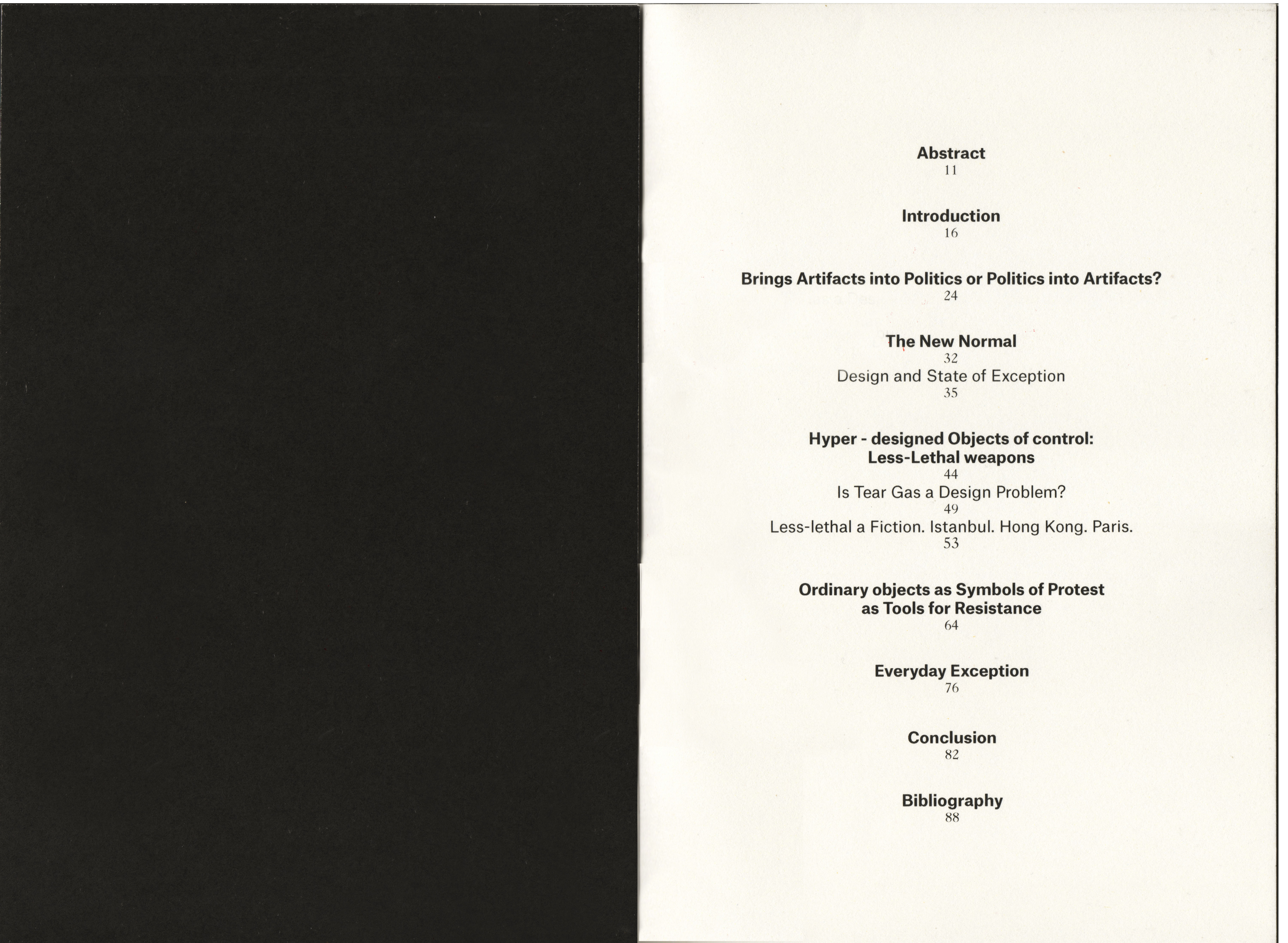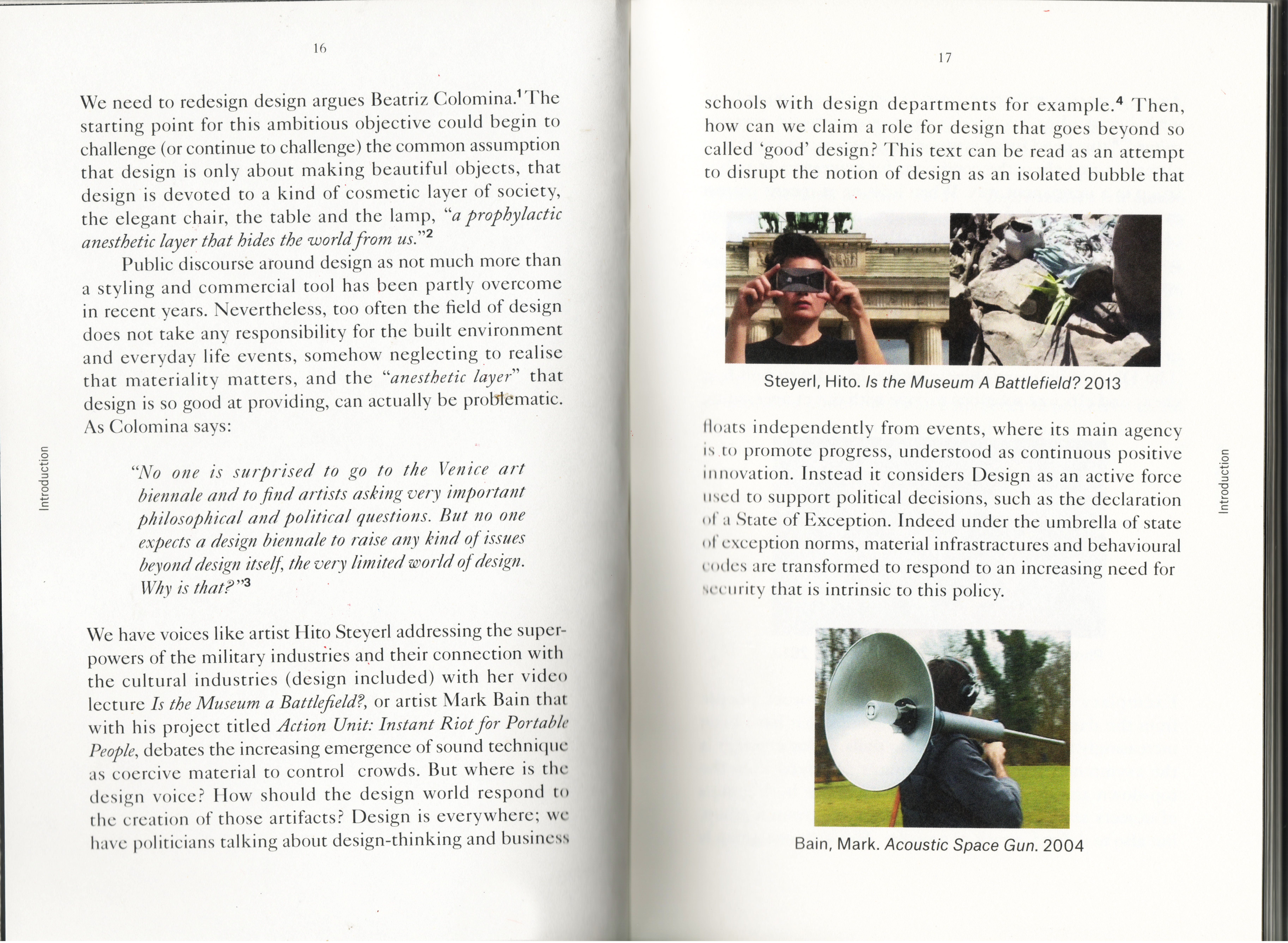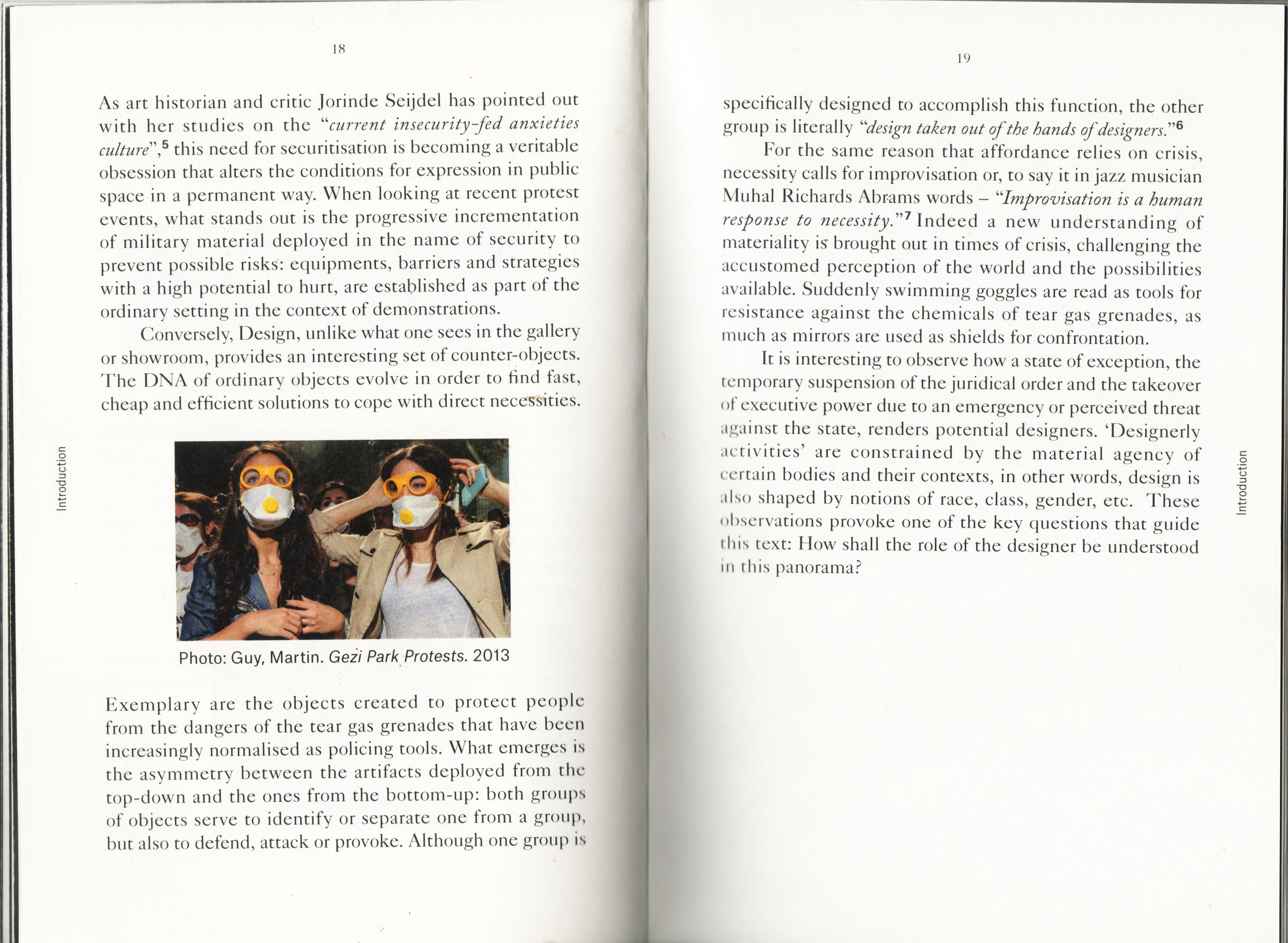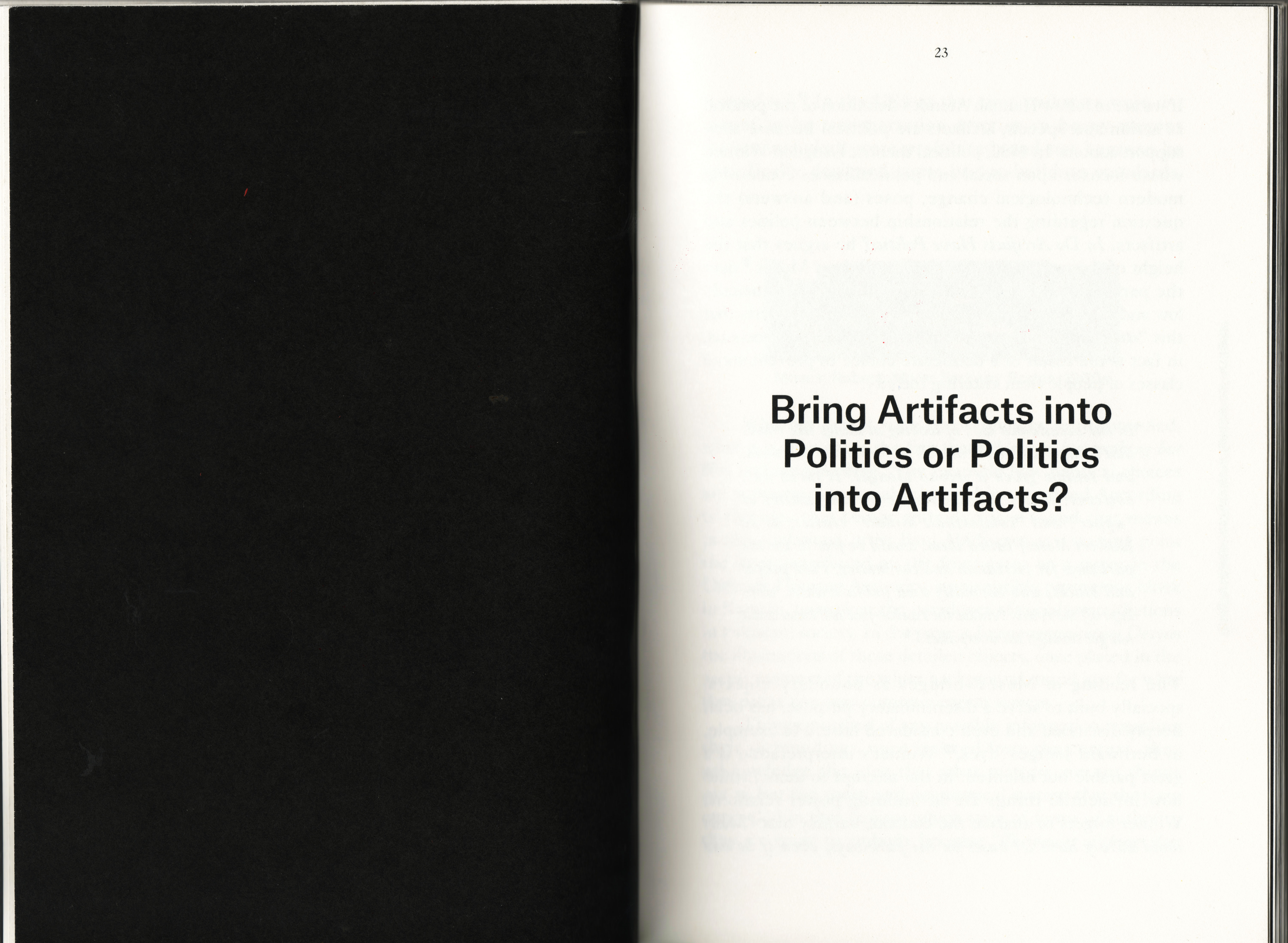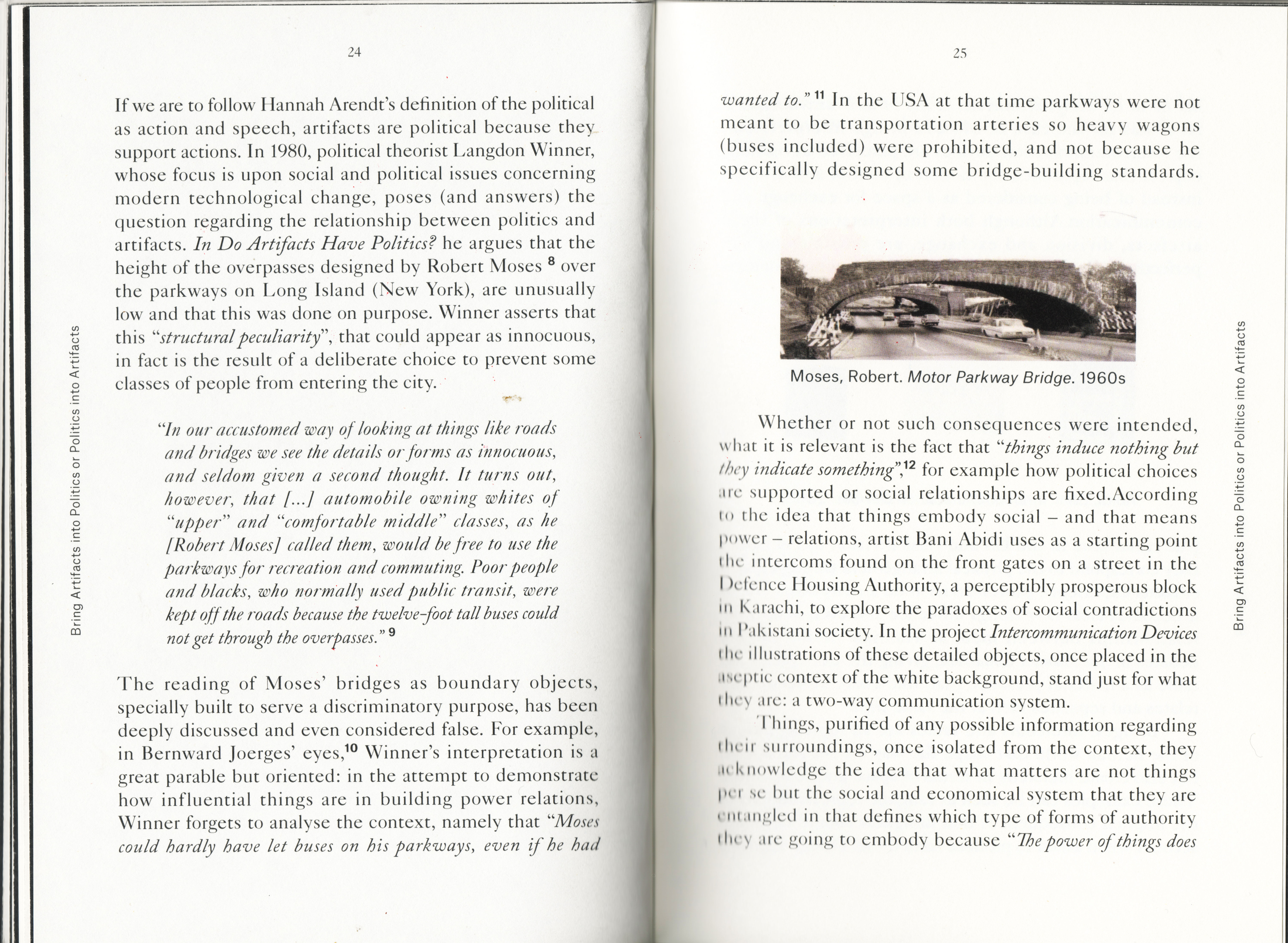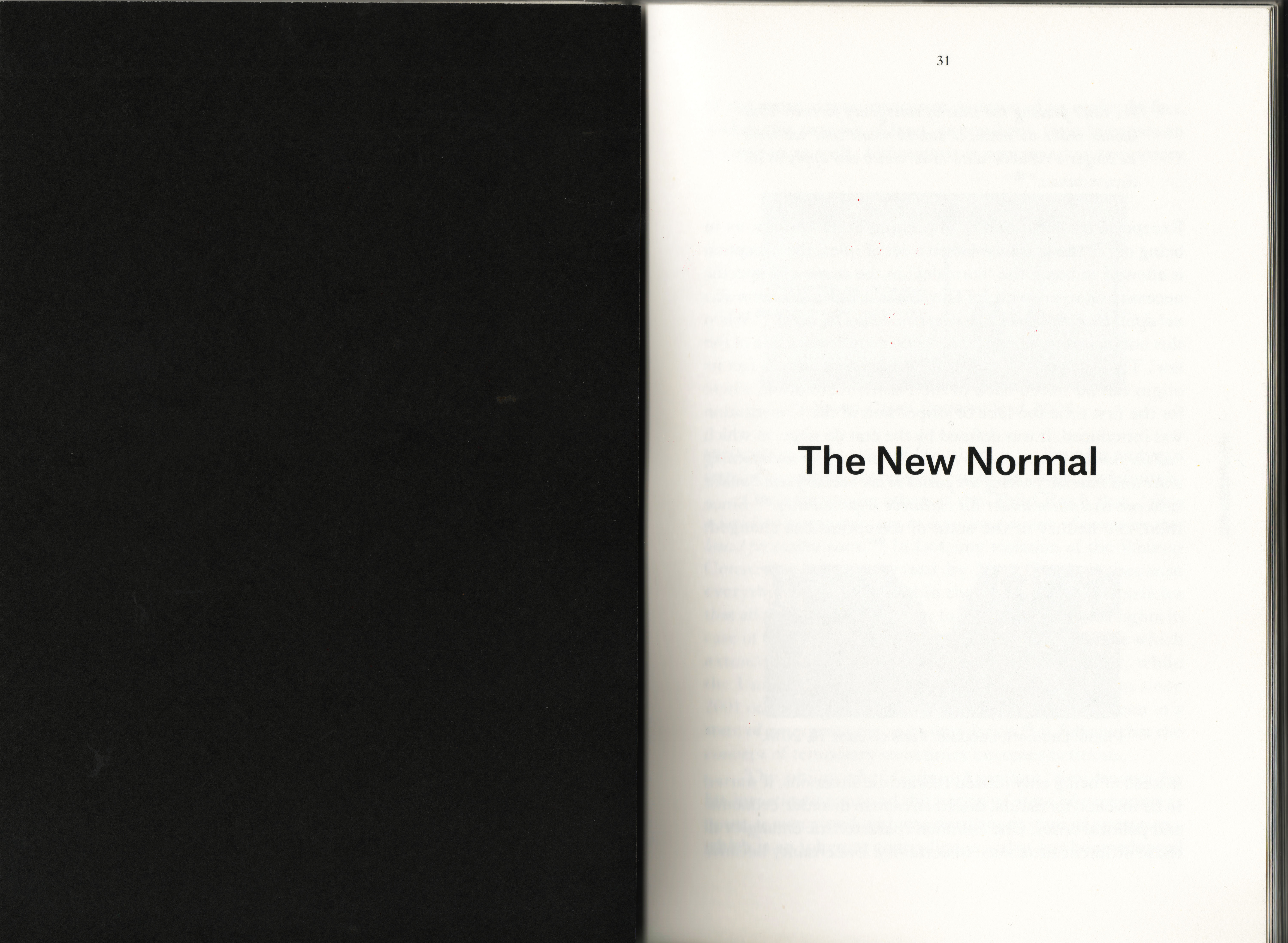This paper uses the legal framework of ‘State
of Exception’ as an entry point to explore how everyday materials can be militarised when contexts undergo dramatic socio-political changes. Using the analysis of materials deployed in recent protest events, with a
specific focus on the cases studies of Gezi Park, Istanbul 2013, Umbrella Movement uprising, Hong Kong 2014, and Paris Climate Summit, Paris 2015, I highlight an asymmetry – in terms of function and aesthetic effect – between the artifacts employed from the top down and from the bottom up. The thesis I support here is that emergencies bring out an unexpected way of looking at materiality, challenge proposed uses and adapt objects to very specific functions creating design solutions for immediate need.
of Exception’ as an entry point to explore how everyday materials can be militarised when contexts undergo dramatic socio-political changes. Using the analysis of materials deployed in recent protest events, with a
specific focus on the cases studies of Gezi Park, Istanbul 2013, Umbrella Movement uprising, Hong Kong 2014, and Paris Climate Summit, Paris 2015, I highlight an asymmetry – in terms of function and aesthetic effect – between the artifacts employed from the top down and from the bottom up. The thesis I support here is that emergencies bring out an unexpected way of looking at materiality, challenge proposed uses and adapt objects to very specific functions creating design solutions for immediate need.
